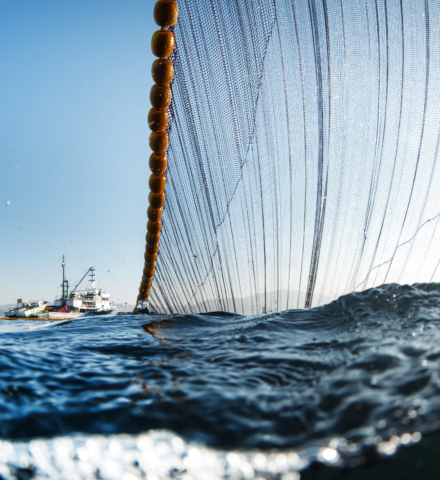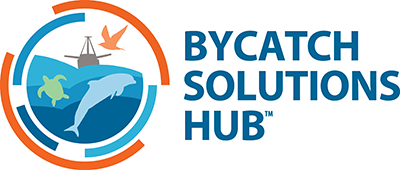Purse Seine
Indian Ocean
Purse seines are large nets used to encircle and trap large schools of fish. In addition to the target fish, these nets also trap all other encircled animals including ETP species. Purse seines can reach over 200 m deep and be over 2,000 m long.


Target Species
Tuna
Bycatch Species
Marine Mammals
Seabirds
Sharks and Rays
Solutions
View allFunding Opportunities
View allDescription
Chilean purse-seine fisheries are comprised of around 500 “artisanal” vessels (<18m in length). Historically, high bycatch rates of Pink-footed shearwater were observed in the area (>1,500), an Endangered in Chile. A modified version of the purse seine (MPS) has been developed through a collaboration between the fishing industry, BirdLife, and net makers, and has shown significant reduction of Pink-footed shearwater and Black-browed albatross bycatch.
In the MPS, sections of the net with high seabird entanglement rates need to be modified. This includes a novel buoy mounting method, adjusting the mesh size, and removing excessive netting material. Following these modifications, trials not only showed a 98% reduction in diving seabird bycatch but had no impact on target fish catch and even helped saving costs in net materials. This innovation was recognized as one of the best environmental initiatives in Latin America in 2017 (Premios Latinoamérica Verde).
This project will benefit artisanal fishermen that sell to Blumar Seafood in central Chile. Out of the total 25 purse-seiners managed by Blumar Seafood, 5 vessels have already gone through gear modification thanks to a project lead by BirdLife International and supported by the National Fish and Wildlife Foundation (NFWF). This project will upgrade 5 additional purse-seiners targeting sardine and anchovy to continue efforts toward a total transformation of the artisanal fleet in south-central Chile with Modified Purse Seines (MPS).
In addition to the development of the MPS, this funding will support training workshops for captain and crew members, to provide expertise on the structural modification of the fishing gear and on the minimum standards and maintenance of modifications to secure best bycatch mitigation practices in this fishery.
This project also includes a committed matching contribution of $95,563 USD combined from Birdlife International and Blumar Seafood.
Contact the Bycatch Hub Manager for more specifics on the project workplan and a line-item budget.
Beneficiary: Birdlife International
- 5 Modified Purse Seines - Funding Needed $69,579 USD
- 5 Modified Purse Seines - Partial Funding $30,000 USD
Description
Around 60% of global tropical tuna catches are from purse seine sets on drifting Fish Aggregation Devices (dFADs). However, they also are very good at attracting non-target endangered, threatened, and protected species in addition to tuna. Made of non-biodegradable plastic and netting that extends below the surface, dFADs are an entanglement risk to ETP species, especially sea turtles, sharks, and pelagic rays. Given the inherent nature of deploying dFADs in the open ocean, a majority become lost or abandoned. The fate of approximately 80% of deployed dFADs is unknown. Notably, 7% end up stranded each year.
Impacts caused by lost and abandoned dFADs are ghost fishing by the netting used in dFADs that extends below the surface of the ocean, accumulation of plastic at sea, and damage to vital habitats for fish and turtles, including coral reefs. To mitigate these risks, International Seafood Sustainability Foundation (ISSF) scientists have worked with purse seine fleets to develop a biodegradable non-entangling dFAD called the jelly-FAD that eliminates the use of netting in the dFAD structure, biodegrades as fast as possible once their useful lifetime for fishing ends, and minimizes the use of plastic by replacing it with plant-based and other organic materials.
Through a collaboration with ISSF, this funding opportunity will provide workshops to participating vessels to develop region-specific jelly FADS. Crews will then be trained how to construct, deploy, and test the jelly FADs. Jelly-FAD deployments will then be monitored by fishers, who will record data on the performance of the jelly-FADs at sea (e.g., entanglement of ETP species) and provide feedback to ISSF to further improve bio-FAD designs. Jelly-FAD will be monitored for up to 11 months after deployment.
Beneficiary: International Seafood Sustainability Foundation
- Constructing and Deploying 50 Jelly FADs $50,000 USD
- Constructing and Deploying 50 Jelly FADs FUNDED

